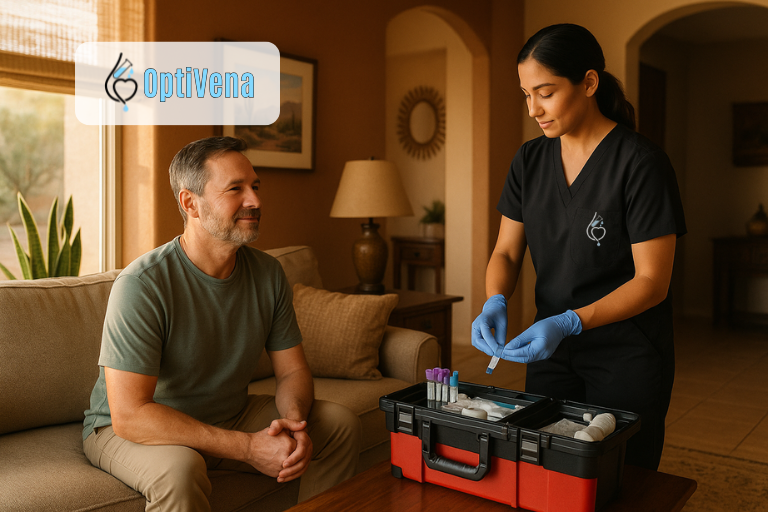Ferritin: The Lab Value That Changes the Game

When it comes to iron health, most people know about hemoglobin and anemia, but there’s another lab marker that can be just as important: ferritin. This protein reflects how much iron is stored in your body, and it often tells the story long before symptoms appear. For patients undergoing therapeutic phlebotomy, ferritin is the number to watch.
What Is Ferritin?
Ferritin is a protein that stores iron inside your cells. A small amount circulates in your blood, and measuring it provides a snapshot of how much iron your body has in reserve. Unlike hemoglobin—which measures oxygen-carrying capacity—ferritin reveals whether you have too much or too little iron stored away.
Why High Ferritin Matters
High ferritin can signal iron overload, which over time may damage vital organs like the liver, heart, and pancreas. But elevated ferritin isn’t always obvious. Many people live with symptoms they don’t realize are connected to iron excess, such as:
◉ Persistent fatigue and brain fog.
◉ Joint pain or stiffness.
◉ Unexplained skin changes, such as bronze or gray tone.
◉ Abdominal discomfort.
◉ Low libido or hormonal changes.
Conditions Linked to High Ferritin
Several conditions can cause ferritin levels to rise, including:
• Hereditary hemochromatosis, a genetic disorder that causes excess iron absorption.
• TRT (testosterone replacement therapy), which can raise hematocrit and ferritin levels.
• Liver disease or chronic inflammation.
• Repeated transfusions or certain blood disorders.
How Therapeutic Phlebotomy Helps
Therapeutic phlebotomy reduces ferritin levels by removing iron-rich blood. Each session pulls excess iron out of circulation, lowering ferritin over time. For many patients, seeing their ferritin levels decline correlates with real improvements in how they feel:
✅ Better energy and reduced fatigue.
✅ Clearer thinking, as oxidative stress decreases.
✅ Improved lab stability, lowering long-term health risks.
Tracking Progress With Labs
Ferritin isn’t a one-time test—it’s something doctors monitor over weeks or months. A patient starting with ferritin levels above 500 ng/mL may need frequent phlebotomy until reaching a target range, often under 100 ng/mL. Once levels stabilize, maintenance sessions keep iron stores balanced.
At OptiVena, we provide professional therapeutic phlebotomy at home. Our team ensures your results are communicated to your provider, making it easier to track your progress without the hassle of repeated lab visits.
Why At-Home Phlebotomy Is Ideal
For patients with elevated ferritin, treatment may require multiple phlebotomies per month. Driving to a clinic each time can be exhausting, especially if you’re already dealing with fatigue. At-home phlebotomy offers:
✅ Comfort and privacy during the procedure.
✅ Flexible scheduling to match your provider’s treatment plan.
✅ Consistent, professional care across Queen Creek, Gilbert, Mesa, Chandler, Scottsdale, and surrounding cities.
Takeaway
Ferritin may not be the most talked-about lab value, but it could be the most important for iron-related health. Monitoring and lowering ferritin through therapeutic phlebotomy helps prevent complications and restore energy. With OptiVena Mobile Phlebotomy, you can take control of your health right from home.






